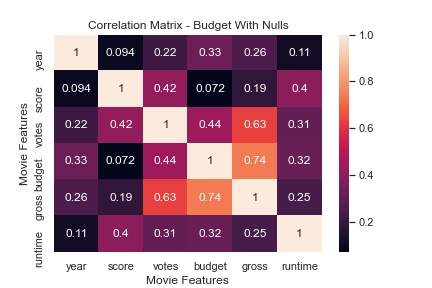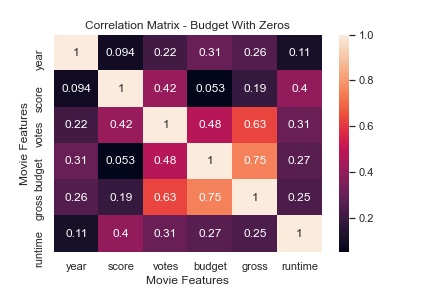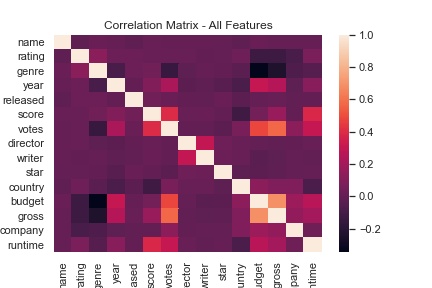I'm interested to see which features have a high correlation to one another. Secondly, I want to know which features are highly correlated to the revenue generated (the gross) of a film.
The Data:
The Movie data can be found in this Kaggle Dataset and came with the following features:
- name; object
- rating; object
- genre; object
- year; int64
- released; object
- score; float64
- votes; float64
- director; object
- writer; object
- star; object
- country; object
- budget; float64
- gross; float64
- company; object
- runtime; float64

Preprocessing/Cleaning
Most features had hardly any missing values. In fact, I still had 96% of the original dataset even after dropping rows with missing values.
Unfortunately, the one feature that I was very interested in--the budget of the film-- had about 27% missing values. I decided to approach the problem in three different ways and compare the results:
- Leave missing values as Null
- Replace missing values with 0
- Impute missing values with the average
If we take leaving the Null values as our control, replacing them with zero had and intersting result. Higher correlated featuers were strengthened while lower correlated features were reduced when compared to budget. The rest of the heatmap is identical which is expected. Imputing the mean served to only reduce highly correlated features.




Conclusion
I was correct that votes and budget had a high correlation to the gross of a film. However, score turned out to have very low correlation to gross. This suggests a film doesn’t have to be well received to earn a large profit or vice versa. One film that comes to mind as an example of the former case The Emoji Movie:
Score: 3.3; Gross: $217 million

